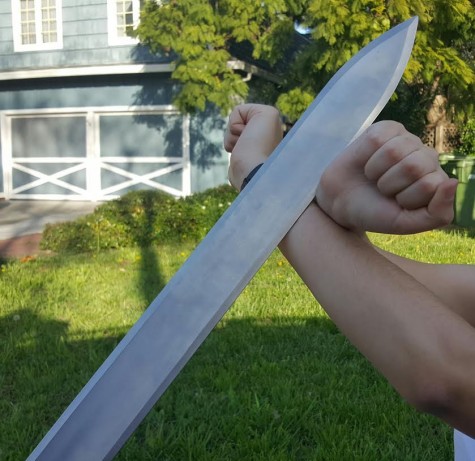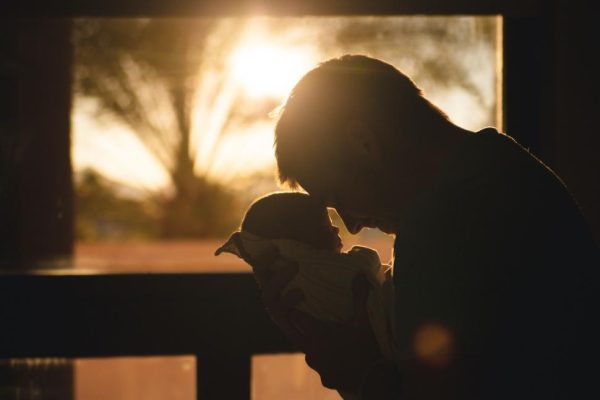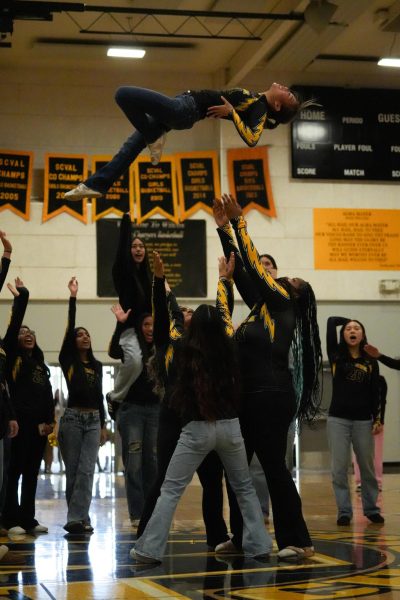Taking a Stand Against Sexual Assault
“She shouldn’t have worn that skirt.” “She was asking for it.” “She was drunk, what did she expect?” “I heard she gets around.” Bystanders usually utter these statements when witnessing a sexual assault investigation, web citizens pollute articles about assault with such comments, classmates mutter them during passing periods, and biased reporters shout them through social media megaphones.
However in reality, most sexual assault cases are not the fault of the victims. In fact, victim-blaming in situations like these is insensitive and possibly the worse course of action. For example, according to the Rape, Abuse, and Incest National Network (RAINN), one in six women will become a victim of an attempted or completed rape in her lifetime, which adds up to approximately a total of 17.7 million American women. Children under the age of twelve compensate for 15 percent of sexual assault or rape incidents and girls from the age of sixteen to nineteen are four times more likely than the general population to suffer at the hands of an assaulter or rapist.

Furthermore, in 47 percent of the cases, the rapist is a friend or acquaintance of the victim, which sometimes makes it more difficult to deal with the situation. It is ignorant to believe that all these sexual assaults and rapes are the fault of the victims, themselves, and the spread of such opinions is poisonous to our society.
Victim-blaming discourages a person from reporting assaults and rapes to authoritative figures because of the fear of being labeled a liar or being seen as someone who “deserved it.” This concern for one’s image and reputation causes serious cases like these to be swept under the rug. 68 percent of sexual assaults are not reported to the police, according to RAINN. It is frightening to know that 98 percent of rapists will never spend even one day in jail.
If victims are continued to be put at fault of their own demise, then future assaults will go unreported and rapists will proceed to enjoy their life outside of jail. And while this sort of rape culture is being unknowingly encouraged by victim-blamers, another American is being sexually assaulted every one-hundred-and-seven seconds.
These daunting and bizarrely unreal statistics have ingrained themselves in our society, which is why everyone must be aware of ways in which to deal with such horrific situations. Karen Leavitt, a Licensed Clinical Social Worker (LCSW), advised us on steps to adhere to and follow after a sexual assault. “Call the police,” she said, “and go to the nearest hospital so they can do the sexual assault kit, such as checking if there’s any sperm, vaginal bleeding, skin or blood underneath fingernails, and take pictures for photographic evidence.” She added, “Most police stations have sexual assault teams which conduct interviews for those who are assaulted.”
As for how to cope with psychological trauma, she urged that one must go to trauma counseling services to help deal with their PTSD (Post Traumatic Stress Disorder), receive trauma-focused CBT (Cognitive Behavior Therapy), and reach out to support groups in the community.
She stressed that part of the issue when someone suffers from sexual trauma is the possible lack of safety and security. Hence, one has to make sure that the person is not alone after assault. If someone was assaulted at a particular place, such as their home, they may not want to return. The presence of friends and family is also crucial as it provides comfort and psychological security for the person.
However, when it comes to the specifics, it depends on the age, sex, and the type of assault; as there are various assaults that affect people in different ways. For instance, if it’s a child, it goes to Child Protective Services, and if it’s a disabled older adult, it goes to Adult Protective Services.
In the case of a teenager, guilt, anger, fear, depression, and anxiety can consume the victim. “The nightmares, flashbacks, and the things that go with trauma and PTSD can dramatically alter your life. Even the smallest thing, such as someone putting a glass on the table, can be a trigger,” informed Leavitt.

Sexual trauma can also be different for each person based on their personal history. Culture and family are huge factors in treatment. Although the entire concept of virginity and purity is outdated and inherently misogynistic, it is still used as a weapon to hurt victims of sexual assault. By saying that a victim is “tainted,” one may be destroying one of the few sources of their self-worth. However, the most important factor is contacting the police, going to the emergency room, and receiving counseling and therapy.
The importance of female sexual assault and rape is sometimes dampened by the existence of male victims. Nonetheless, according to the National Sexual Violence Resource Center (NSVRC), 91 percent of sexual assault and rape victims are female. In some cases, males will often use “but guys get raped too” in response to a discussion about female sexual assault. However, such a statement should not be used to detract from female assault and rape cases. Although both are equally important and should be acknowledged as so, the two are in their own spheres and should not be held in comparison or competition of each other.
Another reason sexual assault and rape is not reported is due to distrust of people of authority in one’s community. For example, high schools are mandated to report sexual assault cases to the police, as they originally “weren’t taking judiciary steps to pursue and investigate the case; they brushed it under the rug,” disclosed Leavitt. However, >INCLUDE POLL HERE<. Unless the person who has been assaulted reports the case, it will not get anywhere in the judicial system. Additionally, the case gets even more convoluted if someone waits a week or two, because the physical exam is missing. However, shock, PTSD, or acute stress syndrome, can prevent someone from going immediately to the police. Leavitt affirmed that “anyone involved with minors has to report it and if they don’t, the liability falls on them.”
It is that very statement that makes it difficult for colleges to implement consequences for sexual assault cases. Each case is unique, and sometimes, the assaulter is privately excused of their actions because of their identity and importance to the college, especially if he or she is an athlete. Thus, the treatment of sexual assault and rape serves as a crucial decisive factor for some people when looking for colleges. “Nobody should have to avoid certain colleges because the administration fails to protect their own students; student safety should be a priority,” said Emma Kreider, a Wilcox junior.





